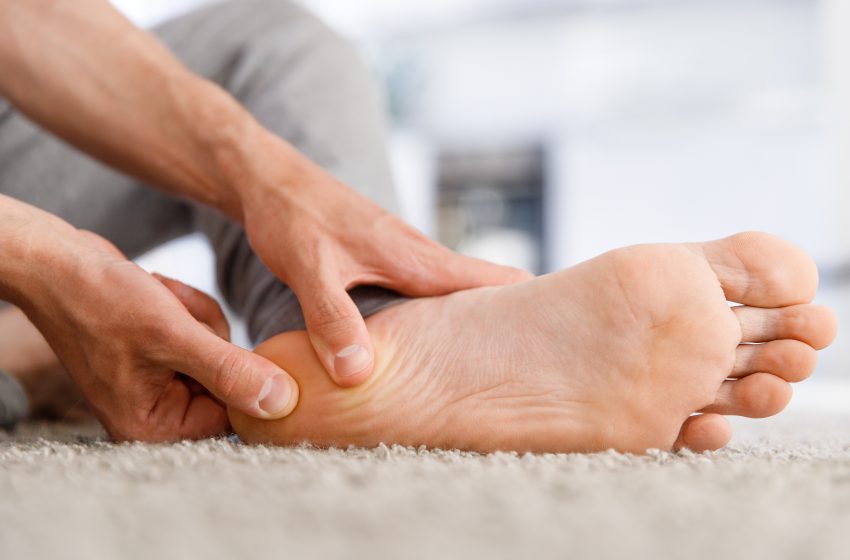
Sharp Pain In Heel When Stretching
Consult your physician if you experience a sharp pain in heel when stretching. There are two reasons you may feel such pain in the foot. If you have an injury or specific medical condition, it can cause heel pain.
If it is an injury, you may already know the cause and reason for the issue. If you don’t have an injury, we will share some of the diseases responsible for your situation, along with specific injuries.
Since several medical problems reflect such signs, it is wise to go through the list and compare them with your symptoms. This step is vital to eliminating which issues don’t relate to your condition.
That aside, you can move to the next part of the process by seeking out similar treatments. Those remedies are suitable and safe to use as they are proven to work for all illnesses.
Above all, visit a doctor first and leave this information as a last resort to diagnosing yourself or others. This information serves only as a last resort to help those who don’t have access to medical care or analysis.

Contents
Sharp Pain In Heel When Stretching – The Likely Causes
Plantar Fasciitis
Plantar fasciitis occurs when the banded tissue that joins the bottom of the feet to the heel has inflammation. Some known causes of this condition are overuse of the heel, walking on uneven surfaces, and wearing the wrong shoes.
Symptoms of plantar fasciitis are Achilles heel tightness, swollen heel, and pain in the arch of your feet. Other signs are heel pain that increases during exercise.
This pain can last for a very long time. You may experience pain when you stand from a sitting position.
Treatment for this condition is icing the area, using a compression bandage, and elevation of the foot. Other therapeutic methods are support structures like braces, splints, and a walking boot.
Physical therapy may be necessary to help the foot regain its natural motion. You may be required to wear orthotics and use a cane or crutch to keep the weight from affecting the heel.
Tendonosis
Tendonosis happens when the collagen in the tendons degenerates and causes chronic pain. The loss of structural protein in the tendon can have long-term effects.
The cause of this condition is overuse of the tendon, which may cause tears that require time to heal.
Symptoms of tendonosis are long-term heel pain that increases with activity. Other signs are stiffness and restriction of the ankle and swelling in the heel and ankle.
Treatment for this condition is rest, icing the affected area, and elevating the foot. Other remedies are wearing a compression bandage, tape, or brace to help support the injured heel.
Bone Spurs
Bone spurs are another condition that can cause sharp pain in the heel. This issue occurs when a small amount of bone grows abnormally on the heel.
The cause of the abnormal growth is calcium deposits that build up over time. The spur may result from repetitive injuries or strain and stretching of the tissue around the heel.
Symptoms of bone spurs are a sharp pain in the heel when stretched, especially in the morning when you stand. Other signs are consistent dull pain and swelling around the affected area.
Treatment for this condition is the icing of the heel and getting adequate rest. Other remedies are special footwear and accessories to help the heel and arch of the feet.
Sharp Pain In Heel When Stretching – Other Causes
For any of these conditions, you can use the anti-inflammatory medication if you desire or increase the intake of anti-inflammatory foods to help with the pain.
Most heel pain will require attention from a podiatrist who may implement orthotic devices to help. That is why it is vital to visit your doctor and use these methods as a last resort. However, we still have more to share, so keep reading.
Sever’s Disease
Sever’s disease occurs when the plate in the heel is irritated or swollen. The cause of this inflammation is from the stress that continually applies pressure to the plate.
This condition happens mostly with children and adolescents. It is common among children eight to fourteen years of age.
Symptoms of Sever’s disease are severe pain in one or both heels. Other signs are swollen heel with redness and increased pain during activity.
Treatment for this condition is resting the feet and icing the heel to reduce swelling. Other remedies are foot supports for shoes to give added comfort to the heel.
Bursitis
Bursitis is another condition that may cause sharp pain in the heel when stretching. This disease occurs when the bursa sac in the heel becomes inflamed.
The inflammation happens due to an injury or overworking of the heel. Arthritis and diabetes are other conditions that can cause bursitis.
Bursitis symptoms include sharp pain in the heel and tenderness. Other signs are redness and a warm feeling around the heel. Pain increases if you tiptoe.
Treatment for this condition is lots of rest and icing the heel periodically. You can try using orthotic accessories to help give comfort to the heel.
Physical therapy will be necessary to help restore strength and movement to the affected area.
Tendonitis
Tendonitis occurs when the tendon of the heel has inflammation. Sudden impact activities like jumping and running can be responsible.
This injury doesn’t tear the tendon, so it has a shorter recovery rate than tendinosis. The difference is what type of injury you have.
Symptoms of tendonitis are sharp pain in the heel and difficulty moving the ankle joint. You will experience stiffness and swelling of the area. If you exercise, the pain will increase and worsen the next day.
Treatment of this condition is rest, icing of the tendon, and physical therapy. It helps to elevate the feet and use compression bandages or tape to stabilize the area. If the injury is severe, you may need surgery to fix any issues.
The sharp pain in heel when stretching that is making you uncomfortable needs attention. Consult your doctor for the best way forward to guarantee more success.
If you use this information, be very thorough in your assessment.

